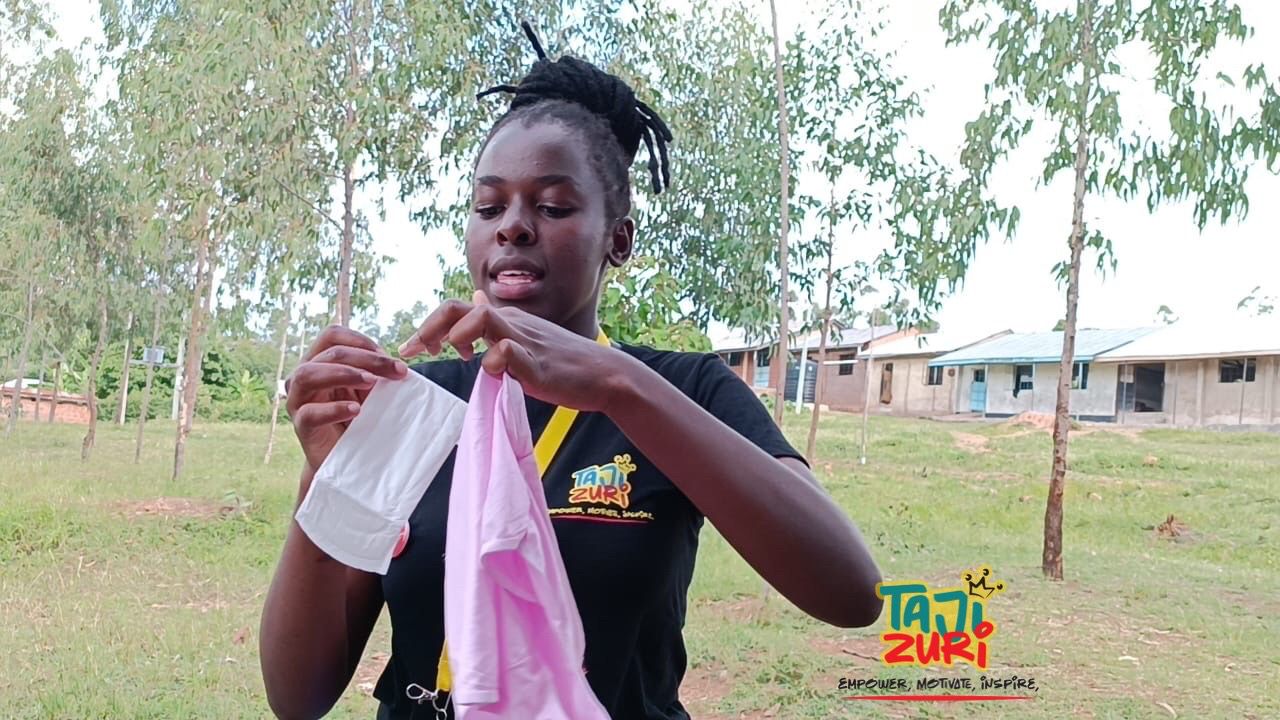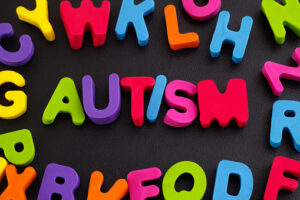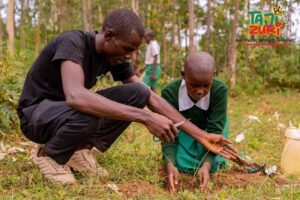Background
Adolescence is the phase of life between childhood and adulthood, from ages 10 to 19. It is a unique stage of human development and an important time for laying the foundations of good health where adolescents experience rapid physical, cognitive and psychosocial growth. This affects how they feel, think, make decisions, and interact with the world around them.
According to the World Health Organization (WHO), despite being thought of as a healthy stage of life, there is significant death, illness and injury in the adolescent years. Much of this is preventable or treatable. During this phase, adolescents establish patterns of behavior – for instance, related to diet, physical activity, substance use, and sexual activity – that can protect their health and the health of others around them, or put their health at risk now and in the future.
Rights According to WHO Regarding Sexual and Reproductive Health
The World Health Organization (WHO), in conjunction with international human rights frameworks, recognizes that sexual and reproductive health and rights (SRHR) are fundamental human rights. These rights are interconnected and important for individuals to live healthy, dignified, and fulfilling lives. While there isn’t a single, exhaustive list of WHO sexual and reproductive health rights in a fixed document, there are core principles and widely accepted rights that WHO advocates for, they include:
- The Right to Life and Security of Person: This states the right to be free from sexual violence, coercion, and harmful practices (e.g., female genital mutilation, forced marriage). It also encompasses the right to safe pregnancy and childbirth, and to avoid preventable maternal mortality.
- The Right to Health: This implies the right to the highest attainable standard of sexual and reproductive health, including access to a comprehensive range of quality SRH services, information, and education. These services should be available, accessible, acceptable, and of good quality.
- The Right to Equality and Non-Discrimination: Everyone, regardless of age, sex, gender identity, sexual orientation, marital status, disability, ethnicity, religion, or socioeconomic status, has the right to equal access to SRH information and services without discrimination. This also includes addressing gender inequality and harmful gender norms.
- The Right to Privacy and Confidentiality: Individuals have the right to privacy in matters relating to their sexual and reproductive health, and their personal health information should be kept confidential.
- The Right to Information and Education: Individuals have the right to accurate, comprehensive, and age-appropriate information about sexual and reproductive health, including contraception, STIs, puberty, and healthy relationships. This empowers them to make informed decisions.
- The Right to Marry and Start a Family (or not): This right encompasses the freedom to choose a spouse and to enter into marriage with full and free consent, as well as the right to decide on the number and spacing of children. It also implies the right not to marry or start a family.
- The Right to Accountability: Governments and duty-bearers are accountable for upholding and protecting these rights, ensuring that policies and services are in place to realize SRHR for all.
Importance of Sexual and Reproductive Health (SRH) Awareness for Adolescents
Adolescence is a period of significant physical, mental, emotional, and social development, including the exploration of identity, relationships, and sexuality. SRH awareness during this time is vital for several reasons:
- · Informed Decision-Making
Adolescents are able to make responsible and informed choices about their bodies, relationships, and sexual activity when empowered. This includes understanding consent, contraception, and the risks of unprotected sex.
- · Prevention of Unintended Pregnancies
Providing comprehensive SRH education can reduce rates of unintended pregnancies, which can have significant negative impacts on an adolescent’s education, health, and future opportunities. Teenage pregnancies are associated with higher health risks for both mother and baby.
- · Prevention of Sexually Transmitted Infections (STIs), including HIV/AIDS
Sharing information about STIs, their transmission, prevention methods (like condoms), and available testing and treatment is crucial for protecting adolescents from these infections.
- · Protection from Sexual Violence and Exploitation
SRH awareness helps adolescents recognize and report sexual violence, understand their rights, and learn how to protect themselves from coercion and harmful practices.
- · Healthy Relationships
Understanding healthy sexual development, communication, and boundaries fosters the development of respectful and equitable relationships.
- · Challenging Harmful Norms
SRH education can challenge societal taboos, myths, and misconceptions surrounding sexuality, promoting a more open and healthy dialogue.
- · Access to Services
Awareness helps adolescents identify when and where to seek SRH services, such as family planning clinics, STI testing centers, and counseling, without fear or shame.
- · Overall Well-being
SRH is an integral part of overall health and well-being. When adolescents have control over their sexuality and reproduction, they are better able to participate in social, economic, and political spheres.
Challenges related to Reproductive Health
These challenges include;
- Lack of access to family planning leading to unintended pregnancies, unsafe abortion and increased fertility rates.
- Unsafe abortion results to complications, injuries and death due to unavailability or inaccessible safe abortion services.
- STI’s and Reproductive Tract Infections can lead to infertility and other reproductive health complications.
- Sexual violence and intimate partner violence are significant reproductive health concerns, leading to physical and psychological trauma.
- Infertilityand Reproductive Issues can cause emotional distress, relationship difficulties, and social stigma.
- Cultural and religious beliefs, lack of awareness and social norms can hinder access to and utilization of reproductive health services.
Causes of Poor SRH Awareness
There are several factors contributing to inadequate SRH awareness among adolescents. These include:
- Lack of Comprehensive Sexuality Education: In many communities or schools, sexuality education is either absent, incomplete, or not age-appropriate, leaving adolescents with significant knowledge gaps.
- Taboos and Cultural Barriers: There’s lack of open communication between adolescents, parents and adults since discussions about sexuality are often considered taboo in many cultures and families, this can result in misinformation and reliance on unreliable sources (e.g., peers).
- ·Myths and Misconceptions: Widespread myths and misconceptions about contraception, STIs, and reproductive processes can hinder accurate understanding and lead to risky behaviors.
- Stigma and Shame: Adolescents often experience shame and fear when discussing sexual health or seeking SRH services due to societal stigma, leading them to avoid seeking information or care.
- Lack of Parental Support and Communication: When parents are uncomfortable discussing SRH, adolescents may not receive accurate information or feel comfortable asking questions at home.
- Inadequate Access to Health Services: For many adolescents, particularly in rural areas or marginalized communities, there are significant barriers to accessing SRH services due to limited facilities, high costs, distance, and lack of youth-friendly services.
·
The roles of families, schools and health systems in addressing Reproductive Health Challenges
- Improve access to comprehensive reproductive health services, such as family planning, maternal and child health, and STI prevention and treatment.
- Provide education, access to information, and resources to empower women and adolescents to make informed decisions about their reproductive health.
- Address the causes of gender-based violence and provide support services for survivors.
- Ensure access to safe and legal abortion services.
- Engage communities in addressing harmful social norms and beliefs that hinder reproductive health.
Conclusion
Young people during adolescence mature physically and mentally, but they struggle with psychological issues related to their growth and development. Adolescents must cope with crises in identity; dramatic body changes; their desire for independence; career decisions and self-doubt. Showing empathy, actively listening to them and trying to understand their fears and concerns, validating their feelings and providing comfort when they are experiencing challenges is essential for their physical, emotional and psychological growth.




